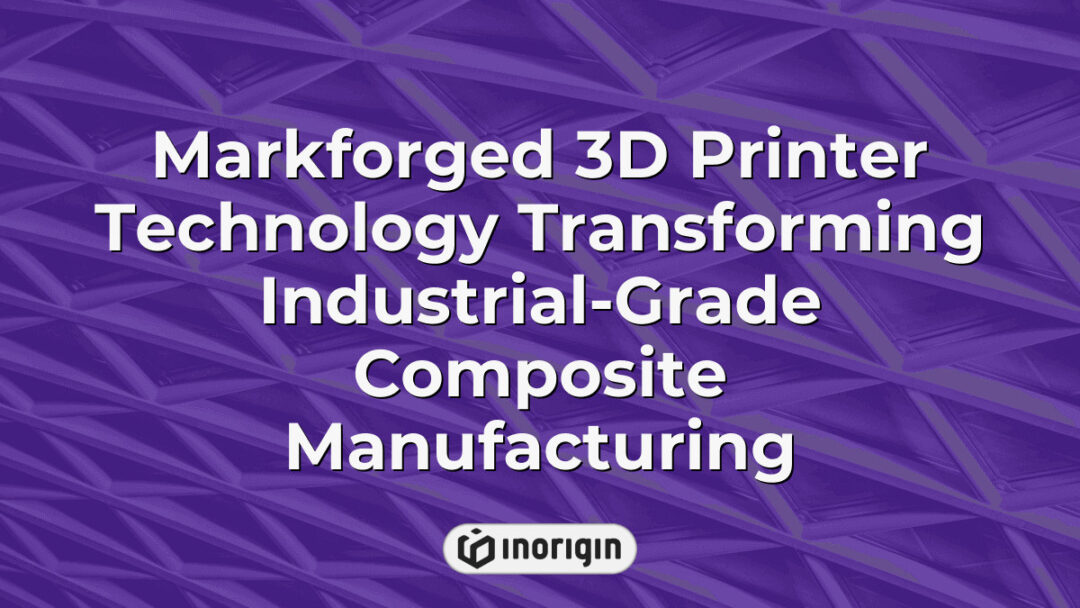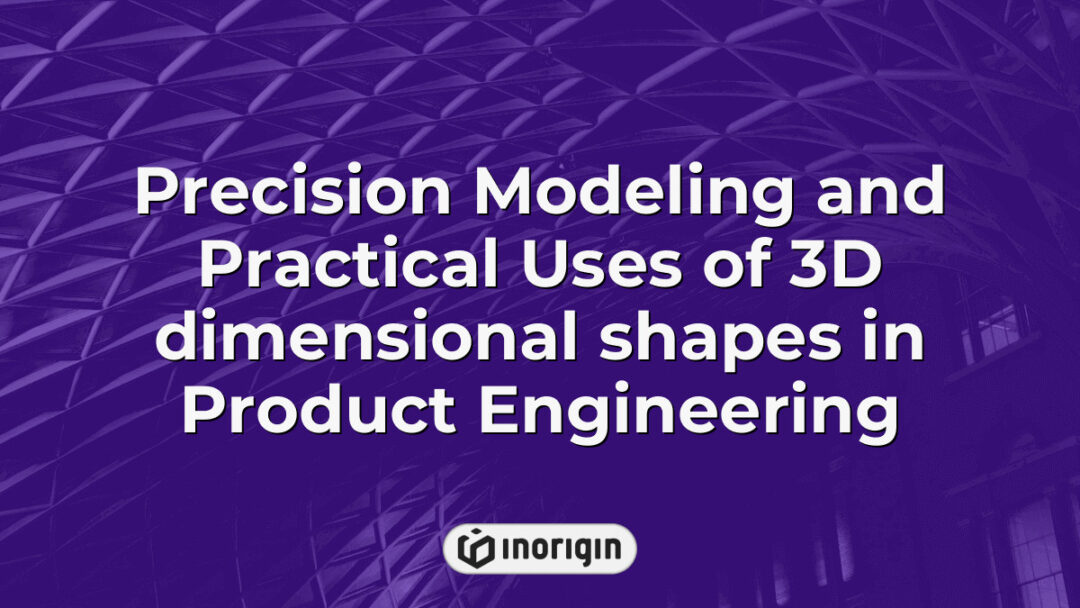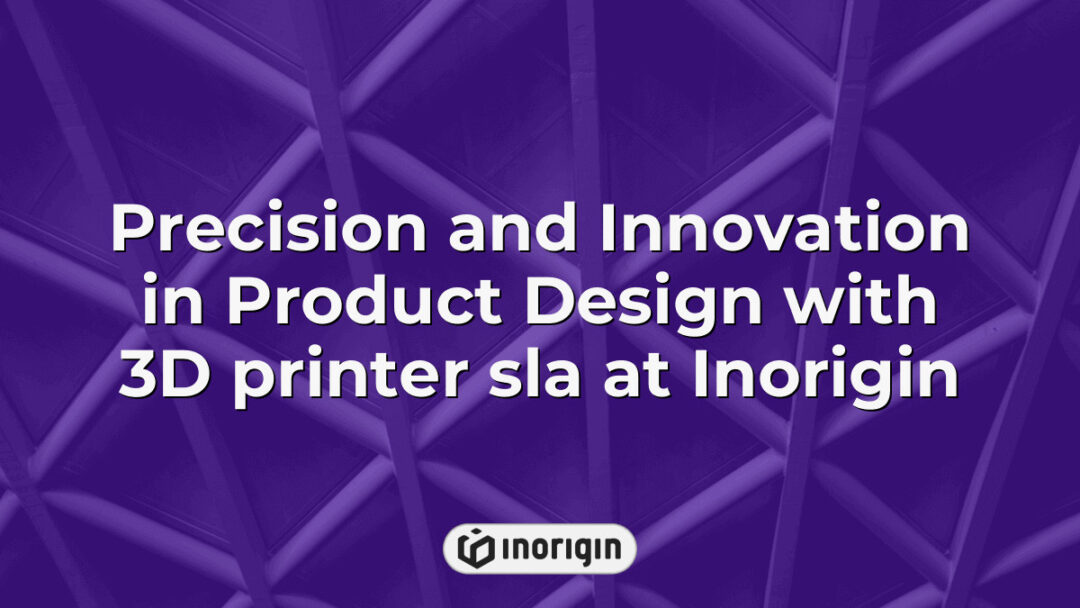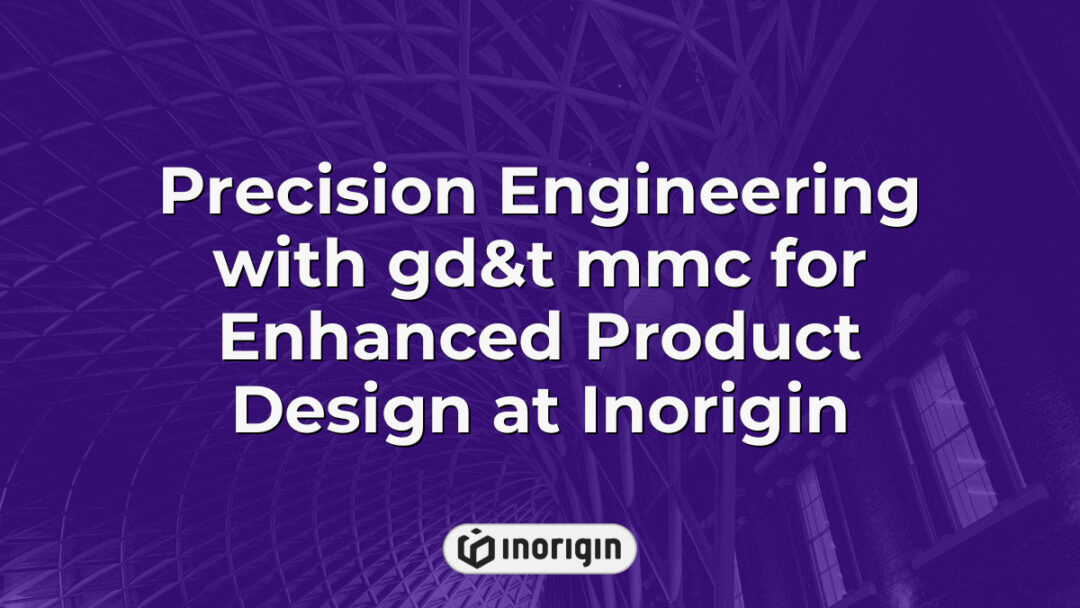In an era characterized by rapid advancements in manufacturing technologies, the Markforged 3D printer emerges as a groundbreaking solution that significantly enhances design flexibility and production efficiency. Renowned for its ability to fabricate high-strength composite materials, this innovative printer not only addresses conventional limitations faced by traditional additive manufacturing but also redefines the standards of functional prototyping and end-use part production. By integrating advanced software capabilities with cutting-edge hardware engineering, the Markforged 3D printer facilitates unprecedented levels of customization and resource optimization across various industries. This article explores the technological underpinnings, applications, and implications of the Markforged system within the evolving landscape of digital fabrication.
| Aspect | Key Takeaway |
|---|---|
| Focus on Markforged 3D Printer | The Markforged 3D printer delivers superior manufacturing performance by combining continuous filament fabrication with cloud-based management, optimizing design flexibility and production workflows. |
| Advanced Material Integration | Utilizing composites like carbon fiber, nylon, fiberglass, and metals, Markforged printers produce strong, lightweight parts tailored for specialized industrial applications. |
| Industry-Specific Applications | Markforged technology is ideal for sectors such as aerospace, automotive, and industrial design, enabling complex geometries that improve strength-to-weight ratios and functional prototyping. |
| User Experience and Onboarding | Access to comprehensive tutorials, community support, and intuitive software interfaces ensures efficient adoption and maximized print quality for users at various skill levels. |
| Support and Service | Robust customer care features a detailed knowledge base, expert technical assistance, and ongoing education through webinars to maintain optimal printer operation. |
| Sustainability Considerations | Markforged encourages responsible practices like material recycling and energy-efficient use to minimize environmental impacts throughout the product lifecycle. |
| Integration with Product Design Expertise | Combining Markforged’s capabilities with advanced engineering and rapid prototyping services enables innovative studios like Inorigin to deliver functionally robust, market-ready products. |
Exploring The Markforged 3D Printer Range
The adage "the devil is in the details" aptly encapsulates the innovative attributes of Markforged 3D printers, which are designed to produce strong carbon fiber end use parts that meet the demanding specifications of various industrial applications. These advanced machines utilize proprietary technology within the realm of industrial additive manufacturing, setting a benchmark for precision and durability. Notably, Markforged has pioneered techniques such as Continuous Filament Fabrication (CFF), allowing for the reinforcement of thermoplastic components with continuous strands of high-strength materials, including carbon fiber. This capability enables manufacturers to achieve unprecedented levels of strength-to-weight ratios when creating components tailored for specific purposes. Moreover, by integrating cloud-based software and real-time monitoring features, Markforged facilitates an efficient production process that enhances workflow management. The distinctively engineered product line stands not only as a hallmark of innovation but also demonstrates significant potential in transforming traditional manufacturing paradigms into more adaptive and resource-efficient practices.
Key Features And Capabilities Of Markforged Printers
The capabilities of Markforged 3D printers can be likened to a master craftsman meticulously shaping raw materials into sophisticated structures; this metaphor encapsulates the precision and strength inherent in these industrial machines. To delineate their key attributes, it is essential to consider several critical factors that contribute to their unique positioning within the market for advanced manufacturing solutions. First and foremost, these printers are designed specifically to produce strong parts that withstand rigorous applications across diverse industries. Additionally, they facilitate the creation of accurate parts with remarkable fidelity, thus ensuring component specifications are met consistently.
- Key Features:
- Material Versatility:
- Carbon fiber composites
- Nylon-based filaments
- Metals such as stainless steel
- Advanced Manufacturing Techniques:
- Continuous Filament Fabrication (CFF)
- Selective Laser Sintering (SLS) integration
- Software-controlled printing processes
- User-Centric Design:
- Intuitive interface for ease of use
- Remote monitoring capabilities
- Adjustable settings for enhanced customization
Moreover, when evaluating the overall performance of Markforged 3D printers, one cannot overlook their commitment to innovative technology that maximizes material properties while minimizing waste. This focus on sustainability further reinforces their appeal to industrial sectors seeking efficient production methods without compromising quality or environmental considerations. Ultimately, by integrating robust construction techniques with user-friendly operation, Markforged stands at the forefront of modern additive manufacturing technology.
Applications Across Different Industries
The versatility of Markforged 3D printers facilitates a wide range of applications across various industries, effectively transforming the landscape of manufacturing and production. In particular, these industrial machines excel in producing complex geometries that are often unattainable with traditional manufacturing methods. Consequently, high strength Markforged D printers have gained prominence for their ability to fabricate durable and lightweight components suitable for demanding environments. For example, in the aerospace industry, they enable the creation of intricate parts that contribute to reduced weight while maintaining structural integrity. Similarly, the automotive sector benefits from rapid prototyping and customized tooling, allowing for accelerated innovation cycles and enhanced product development timelines. These attributes not only underscore the remarkable capabilities inherent in Markforged technology but also highlight its critical role in contemporary engineering practices across diverse fields. Ultimately, the adoption of such advanced printing solutions exemplifies how industries can leverage innovative technologies to address increasingly complex challenges while optimizing performance outcomes.
Materials Used In Markforged 3D Printing
The materials used in Markforged 3D printing are diverse and specifically engineered to cater to the unique demands of various applications. Primarily, nylon serves as a foundational material due to its favorable mechanical properties, including strength, flexibility, and resistance to wear. Furthermore, the integration of micro carbon fibers significantly enhances these characteristics by reinforcing the nylon matrix; this combination results in parts that exhibit improved stiffness and durability compared to standard nylon alone. Additionally, Markforged differentiates itself through the use of composite filaments that incorporate other elements such as fiberglass and Kevlar™, further broadening the functional capabilities of printed components. Thus, the selection of materials plays a critical role in defining not only the performance attributes but also the overall applicability in demanding industrial contexts.
Getting Started With Markforged: Tips And Resources
Getting started with Markforged 3D printing is akin to embarking on a journey through the intricate landscape of industrial innovation, where understanding key components can significantly enhance user experience. To facilitate a smooth introduction to this advanced technology, several essential tips and resources should be considered. First, it is critical to familiarize oneself with the specific capabilities and limitations of Markforged d printers; each model offers unique strengths tailored for various applications within the realm of d printing. Second, leveraging online tutorials and documentation available from the manufacturer can provide valuable insights into optimal machine setup and maintenance practices. Third, engaging with communities or forums dedicated to Markforged users allows individuals to share experiences and solutions regarding common challenges faced during projects. By taking advantage of these strategies, newcomers will find that navigating the complexities of industrial-grade 3D printing becomes more manageable and rewarding.
Frequently Asked Questions
What Is The Pricing Range For Markforged 3D Printers?
The realm of industrial 3D printing has experienced significant advancements, with Markforged emerging as a prominent player in this field. As one envisions the intricate lattice structures and robust components that can be produced through these sophisticated machines, questions regarding their accessibility arise. The pricing range for Markforged 3D printers is notably diverse, primarily influenced by factors such as model specifications, material capabilities, and intended application. Entry-level models such as the Onyx One are priced approximately around $5,000, catering to users who require high-quality composite parts without extensive investment. In contrast, more advanced systems like the X7 or Metal X command higher price points that can soar to $70,000 and beyond due to their enhanced features for metal additive manufacturing and complex composite applications. Moreover, it is essential to note that maintenance costs and ongoing material expenses further contribute to the overall expenditure associated with operating these devices. Hence, understanding the financial implications underlying different levels of equipment will play a critical role in decision-making processes within organizations considering integration of Markforged technology into their production lines.
How Does Markforged Customer Support Operate?
Markforged’s customer support structure is notable for its commitment to excellence, managing over 90% of customer inquiries successfully on the first contact. This high success rate illustrates the efficiency and effectiveness of your typical interaction with Markforged’s support team. The operational framework consists primarily of three key components: a comprehensive knowledge base that provides users with troubleshooting resources, access to dedicated technical support specialists who offer personalized assistance, and proactive follow-up procedures designed to ensure customers achieve successful resolutions to their issues. Each component serves as an integral part of a holistic strategy aimed at enhancing user experience and satisfaction.
Additionally, Markforged emphasizes ongoing education by hosting regular webinars and training sessions that empower users to maximize the capabilities of their 3D printers. By leveraging these educational tools, customers can gain deeper insights into optimal printer operation and maintenance practices. Moreover, the multi-channel approach utilized in customer service allows clients to reach out through various platforms such as email, phone calls, or live chat, thereby accommodating different preferences and promoting efficient communication pathways.
Overall, this robust customer support system not only facilitates immediate problem resolution but also fosters long-term relationships between Markforged and its clientele by prioritizing user empowerment and continuous improvement.
What Are The Warranty And Service Options For Markforged Printers?
The warranty and service options for Markforged printers are foundational to the overall customer experience, particularly when juxtaposed with the often complex landscape of 3D printing technology. On one hand, Markforged offers a standard warranty period that typically spans one year from the date of purchase, encompassing parts and servicing against manufacturing defects. This provision ensures users can maintain operational continuity during the critical initial phase of usage. Conversely, extended support plans may be acquired to enhance this coverage beyond the basic terms; such plans include additional years of protection and access to dedicated technical assistance. Furthermore, customers benefit from various service tiers designed to accommodate different needs—ranging from basic online troubleshooting to comprehensive on-site services. Through these multifaceted options, Markforged aims to facilitate an uninterrupted workflow and promote user confidence in their equipment longevity and reliability. Notably, understanding these provisions is essential for prospective buyers who must weigh their long-term investment risks against the robustness of post-purchase support available within the market context.
Can Markforged Printers Be Used For Educational Purposes?
Markforged printers have garnered attention in various educational settings due to their advanced additive manufacturing capabilities. Specifically, these printers provide students with the opportunity to engage in hands-on learning that aligns closely with modern engineering and design principles. Furthermore, their ability to create complex geometries allows for experimentation and innovation within curricula related to design thinking, materials science, and mechanical engineering. Consequently, institutions can leverage these tools not only for prototyping but also for teaching foundational concepts in 3D printing technology.
Key benefits of utilizing Markforged printers in education include:
- Enhanced Learning Experience: Students gain practical knowledge through direct interaction with cutting-edge technology.
- Interdisciplinary Applications: The versatility of the printer supports a range of subjects from art and design to engineering disciplines.
- Material Diversity: The capacity to print using multiple materials promotes understanding of material properties relevant in real-world applications.
- Collaboration Opportunities: Projects involving Markforged printers encourage teamwork and communications skills among peers.
In consideration of these factors, it becomes evident that incorporating Markforged printers into educational programs fosters an environment conducive to technological literacy and innovation among learners, preparing them for future challenges in the workforce. Such integration serves as a bridge between theoretical knowledge and practical application, thereby enhancing the overall quality of education in STEM fields.
What Are The Environmental Considerations Of Using Markforged 3D Printers?
The use of Markforged 3D printers, much like any technological innovation, brings both benefits and challenges in terms of environmental considerations. Firstly, the materials employed in these printers, such as nylon and carbon fiber composites, necessitate careful evaluation regarding their life cycle impacts. While these materials can contribute to lightweight and durable designs that reduce energy consumption during product usage, their production often involves non-renewable resources and hazardous chemicals. Moreover, it is pivotal to consider the end-of-life disposal methods for printed parts; improper disposal can lead to significant long-term pollution issues due to plastic waste not easily biodegrading. Additionally, operational aspects of using Markforged technologies warrant scrutiny; energy expenditure during printing processes contributes to overall sustainability assessments. It is essential to adopt practices such as recycling filament spools and utilizing biodegradable or recycled feedstock where possible. Collectively, a comprehensive understanding of the environmental footprint associated with Markforged 3D printing technology highlights a critical need for ongoing research and development focused on more sustainable alternatives throughout the entire production lifecycle.
Conclusion
The Markforged 3D printer range exemplifies innovation in additive manufacturing, offering advanced capabilities and versatile applications. By harnessing a variety of materials, these printers provide tailored solutions across multiple industries. Ultimately, embracing this technology can empower organizations to stay ahead of the curve in an increasingly competitive landscape.
Related posts:
- 3D printer manufacturers driving innovation with advanced materials and precision engineering
- Innovations Driving Precision and Strength in Carbon Fiber 3D Printer Technology
- Precision and Innovation Driving Manufacturing with 3D Metal Printer Technology
- Design engineering project breakthroughs at Inorigin’s innovative Greek studio
- Industrial 3D Printers Revolutionizing Manufacturing with Advanced Materials and Precision Engineering
- Mechanical Design Engineering Transforming Product Development with Advanced 3D Printing Solutions




